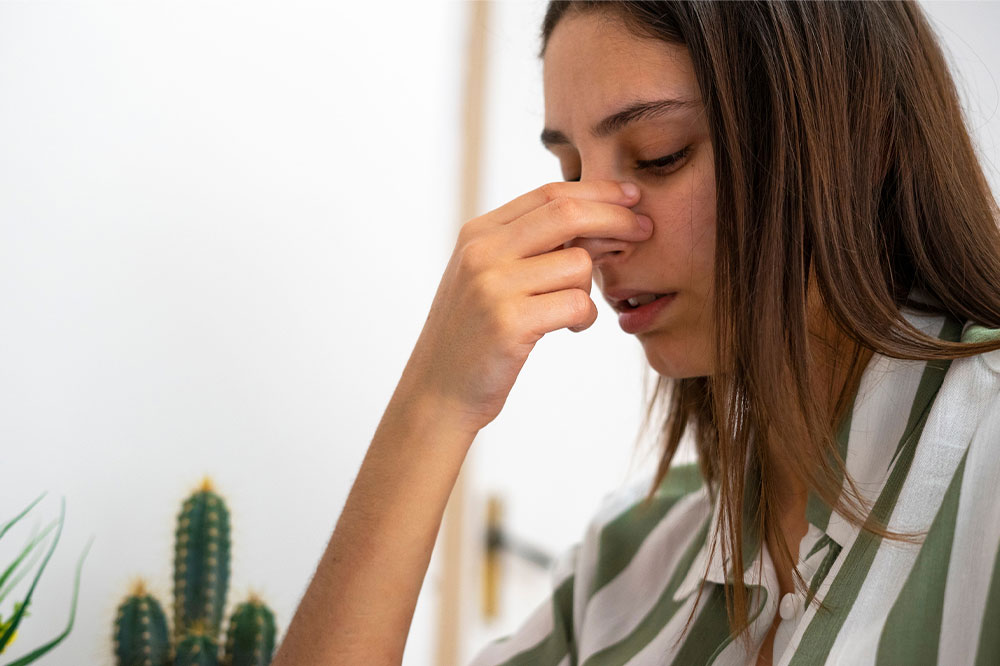Understanding Nasal Vestibulitis: Symptoms, Causes, and Prevention Strategies
Nasal vestibulitis is an infection of the front nasal passage caused by bacteria entering through skin breaches. It often results from nose hair removal, forceful blowing, or improper piercings. Symptoms include redness, swelling, pain, and crusting, which require prompt medical attention. Preventive measures such as gentle nose care, sterilized piercing, and avoiding trauma can effectively reduce risk. Early diagnosis and treatment help prevent complications like abscesses or tissue damage, promoting overall nasal health. This comprehensive guide emphasizes quick recognition and proper management for lasting nasal wellness.

Comprehensive Guide to Nasal Vestibulitis: Recognizing Symptoms, Identifying Causes, and Implementing Preventive Measures
The nasal vestibule is the anterior part of the nostrils, playing a critical role as the entry point for air into our respiratory system. Despite its relatively small size, this area is vulnerable to infections such as nasal vestibulitis, a condition characterized by inflammation caused primarily by bacterial invasion. While typically mild, if left untreated, nasal vestibulitis can lead to more severe complications including abscess formation or cellulitis. Therefore, understanding the signs, causes, and prevention techniques is essential for maintaining nasal health and avoiding discomfort or more serious health issues.
Understanding the Causes of Nasal Vestibulitis
The development of nasal vestibulitis mainly stems from bacteria entering through compromised skin or mucosal barriers. Several common behaviors and factors increase the risk of bacterial infiltration, making awareness vital for prevention.
Below are the principal causes of nasal vestibulitis, along with insights into how they facilitate bacterial entry and proliferation within the nasal area:
Nasal hair removal practices
Techniques such as plucking or waxing nasal hair can inadvertently damage the delicate skin lining the nasal vestibule. This creates tiny tears or abrasions that serve as entry points for bacteria, significantly increasing infection risk.
Recurrent or forceful nose blowing
Excessive airflow and pressure from frequent or vigorous nose blowing can cause micro-fissures in the lining of the nose. These small breaks in the skin allow bacteria to invade and colonize the tissue, leading to inflammation and infection.
Nasal piercings
Surgical piercing in the nasal area, if done improperly or with unsterilized equipment, can introduce bacteria directly into tissues near hair follicles. This not only causes localized inflammation but can also escalate into bacterial infections or abscesses.
Use of contaminated or unsterilized jewelry
Jewelry that isn’t properly sterilized can harbor bacteria, increasing infection risk during and after piercing procedures.
Prevention is often centered around avoiding behaviors and practices that compromise nasal integrity. Opting for sterile piercing procedures, avoiding aggressive hair removal, and being gentle during nose blowing are crucial. Additionally, some individuals may have allergic reactions to certain metals, which can inflame tissues and predispose to bacterial invasion, emphasizing the importance of choosing hypoallergenic jewelry when necessary.
Recognizing the Symptoms of Nasal Vestibulitis
Symptoms of nasal vestibulitis can vary from subtle to obvious, often developing gradually or suddenly depending on the severity of infection. Early recognition is important for effective intervention and to prevent complications such as cellulitis or abscess formation. Key symptoms include:
Redness and swelling
Initial inflammatory responses typically include redness and swelling around the nostrils and nasal tip. As inflammation progresses, nasal passages may become narrower, resulting in difficulty breathing through the affected nostril. Visible redness often extends beyond the immediate area, signaling spreading inflammation.
Persistent pain and tenderness
An infected area tends to be tender, especially when touched or pressed. The pain can intensify over time and usually localizes near the nasal tip or inside the nostrils, indicating ongoing tissue irritation.
Appearance of pustules or boils
Small, pimple-like bumps or boils filled with pus can occur within the nasal cavity or on its surface. These lesions often rupture, releasing bacterial-laden fluids that may worsen the infection or lead to secondary bacterial spread.
Formation of abscesses
Larger pockets of pus, or abscesses, can develop as the body's immune response attempts to contain the infection. Abscesses can obstruct airflow and may require medical drainage if they do not resolve on their own.
Crust formation and nasal blockage
Dried mucus mixed with bacteria and cellular debris often forms crusts inside the nostrils. These crusts can thicken and enlarge, further obstructing nasal passages and increasing the risk of recurrent infections.
Nosebleeds
Frequent or unexplained nosebleeds are common in nasal vestibulitis, often resulting from damaged or inflamed blood vessels within the nasal tissue.
If you experience persistent symptoms such as redness, swelling, pain, or crusting, consulting an ENT specialist promptly is advised. Early intervention with appropriate medical treatment can prevent progression to more severe infections, ensure faster recovery, and reduce the likelihood of lasting scars or tissue damage.
To summarize, nasal vestibulitis is a common yet manageable condition primarily caused by bacterial invasion facilitated by behaviors such as aggressive nose blowing, improper piercing, or inadequate hygiene. Recognizing early symptoms like redness,痛, and crusting allows for timely treatment, typically involving antibiotics or topical therapies. Preventive steps including gentle nose care, sterilized piercing practices, and avoiding skin trauma around the nose are essential for maintaining nasal health and avoiding complications. Maintaining good overall hygiene and consulting healthcare professionals whenever symptoms worsen enables effective management of this condition, ensuring nasal comfort and health.





